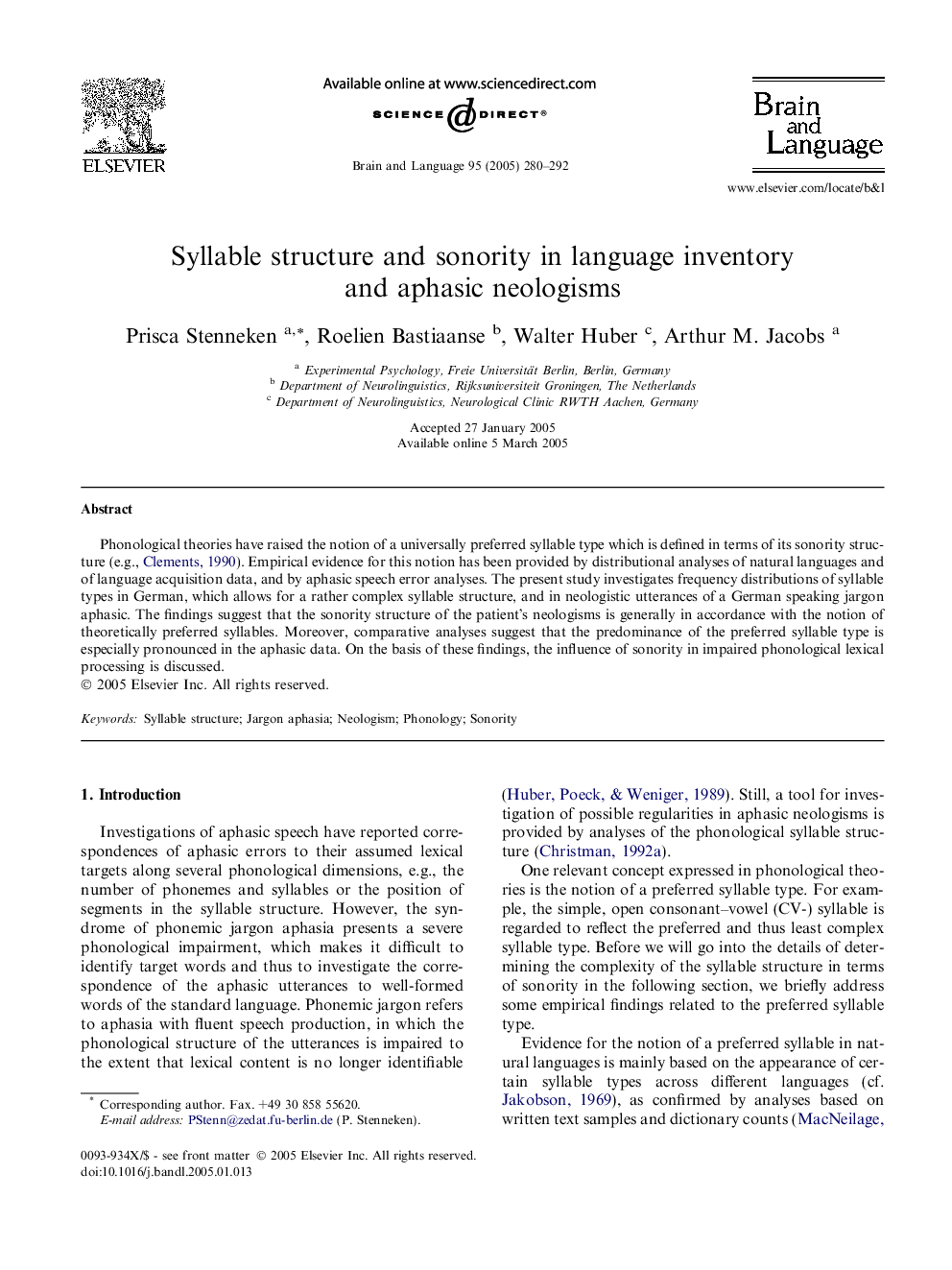| Article ID | Journal | Published Year | Pages | File Type |
|---|---|---|---|---|
| 10456829 | Brain and Language | 2005 | 13 Pages |
Abstract
Phonological theories have raised the notion of a universally preferred syllable type which is defined in terms of its sonority structure (e.g., Clements, 1990). Empirical evidence for this notion has been provided by distributional analyses of natural languages and of language acquisition data, and by aphasic speech error analyses. The present study investigates frequency distributions of syllable types in German, which allows for a rather complex syllable structure, and in neologistic utterances of a German speaking jargon aphasic. The findings suggest that the sonority structure of the patient's neologisms is generally in accordance with the notion of theoretically preferred syllables. Moreover, comparative analyses suggest that the predominance of the preferred syllable type is especially pronounced in the aphasic data. On the basis of these findings, the influence of sonority in impaired phonological lexical processing is discussed.
Related Topics
Life Sciences
Neuroscience
Biological Psychiatry
Authors
Prisca Stenneken, Roelien Bastiaanse, Walter Huber, Arthur M. Jacobs,
